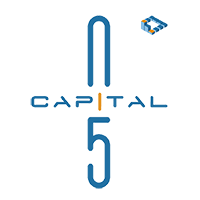Junchen Pu of N5Capital: Good Businesses in the Eyes of VC

How to select a good business?
Many people would often ask: XX is a good business. Would you invest in it? XX product is well done. The users’ demand is robust and the user experience is perfect. Why don’t you invest in it? First, I’d like to define the “good business”. A good business we mention here is one that can make big money. Good product is not equivalent to good business; making money does not mean that the business can be developed to a large scale; and developing a business to a large scale does not mean it’s economical. Today, I will deconstruct the substance of business mainly through two types of logic.
The money-making logic of the Internet: The money-making logic of the Internet can be roughly summarized by the following formula:
Revenue=traffic *conversion rate * repeat purchase rate * ARPU
The elements in the formula are specifically analyzed as follows:
1. Traffic and traffic cost
Is there sufficient and steady traffic? Is it cheap enough? Will the cost be reduced after mass production? Traffic is the most important element that is traditionally used to evaluate Internet businesses. There are many mature methods and experience to improve traffic. Some traffic is bought; some is automatically generated; some is driven by the products, and some is brought about by the cognition of the users. Each company has its own method to boost traffic, but the ultimate goal is the same, that is, to generate sufficient and cheap traffic.
2. Conversion rate
The first thing is whether the obtained traffic is precise enough to help find the target users. All can understand this. Another important dimension is timing. For example, if you engage in house lease business, it’s more meaningful for you to have users whose lease term will soon expire than have average tenant groups. The second thing is whether the traffic is generated in the consumption scenario? This is also very important. For instance, in the mother and baby-oriented communities, the E-business conversion rate of the APP that focuses on parenting knowledge is not as high as the APP that discusses commodity sharing, because the users of the latter are to buy the commodities. The third thing is whether the traffic can be converted online. We all know that the more standard the commodities are, the more easily they are converted online. It’s very hard for non-standard products, especially products of high per customer transaction, such as furniture and houses, to be converted online. Although the ARPU is high, the decision procedure for the users is protracted, and the users toggle between different platforms, heavily relying on offline businesses. Therefore, the value of the traffic is not that high.
3. Repeat purchase rate
We have been talking about high frequency and low frequency and paying attention to consumption frequency. This involves two aspects: first, the continuous purchases of the users; and second, the users’ loyalty and the possibility of users’ fleeing. If the consumption frequency is low, there is a cost of waking up the users. It’s good some businesses can change low frequency to high frequency. This is can be achieved by some innovation in the products or increase the interaction between the users and the platform. Take vehicle insurance as an example. If the users are allowed to set prices and get rebate according to their own driving habit and mileage, the interaction of the users will become very frequent. Another example is rent installment. As a matter of fact, payment of rent for several months is changed to monthly payment or payment for even shorter terms. In the process of improving repeat purchase rate, one should think what relationship he can establish with the users besides transaction. If it’s merely a transaction platform, there is high possibility for the users to flee. Therefore, many E-business companies have to improve the contents and establish communities.
4. ARPU and gross profit
Are ARPU and gross profit are high enough or is there room for direct extension? Some companies of low ARPU or gross profit usually would tell some extended stories. The conversion in it must be clarified. Not all attempts of improving low frequency to high frequency will be successful. The consumption scenario, the users’ trust and the availability of options for the users are all extremely significant. For example, we all know that car washing is of high frequency; maintenance is of moderate frequency; and repair is of low frequency. But car washing of high frequency can hardly be converted into maintenance. In contrast, it’s easier for repair to be converted into maintenance, because the users have greater trust in the maintenance recommended by the repairmen and think the repairmen are more professional. Nevertheless, it’s hard for a car washing worker to convince the users about the difference that different engine oil and maintenance project can make. Then, can car washing be converted into interior cleaning, coating and other beautification programs? It’s possible in scenarios. Still, there is the problem of the availability of options for the users. There are a lot of options in this aspect for the users. In the face of such programs of high gross profit, the users would compare the prices. Therefore, if the car washing business does not make money and the conversion rate of the programs of high gross profit is not high, obtaining users through car washing subsidies is no better than directly doing businesses in programs of high gross profit.
So in the so-called businesses, some or all of these parameters are higher or very high. It’s very difficult to achieve this in the beginning. Then, the problem that needs to be considered is that when the company has sufficient capital, size and talents, whether the other non-prominent parameters can be substantially improved. In considering how much money can be earned, some factors must be taken into account, such as marginal revenue and safety margin. Next I will deconstruct the problem from the perspective of cost. The cost of a business involves the cost of obtaining users, IT expenses, operation and management expenses and the cost of product services. Some of the cost is fixed; some cost arises with the rise of sales volume, and some cost increases in steps. If the aforementioned cost is split and is represented by a formula, then we have: cost=fixed cost + variable cost. We also represent revenue and profit with a formula. Revenue means the quantity of products sold. So revenue=sold units * unit price; profit=revenue-cost. Here we will introduce three basic concepts of the science of management: contribution margin ratio, breakeven and safety margin.
1. Contribution margin: Contribution margin is the revenue minus variable cost, that is, profit=contribution margin-fixed cost
2. Breakeven: Breakeven means that the profit is 0. That is, fixed cost= contribution margin (the contribution margin of breakeven point)
3. Safety margin; Safety margin refers to the revenue over the breakeven point. That is, safety margin=sales revenue- breakeven point revenue
Next we will do the formula deduction:
Profit= contribution margin-fixed cost
= sales revenue * contribution margin ratio- breakeven point revenue*contribution margin ratio
= (sales revenue- breakeven point revenue) * contribution margin ratio
=safety margin * contribution margin ratio
So we can see that two parameters, safety margin and contribution margin ratio, have the greatest impact on profit. This is most clearly indicated by the diagram. From the perspective of VC, we will surely look for the business with sufficiently large contribution margin ratio and sufficiently high safety margin. When the contribution margin ratio is high, the larger is the size of the company, the better. The money that the company makes will far surpass the rise of the cost. That is to say, its variable cost rate is low and the variable cost does not grow with the increase of the company’s revenue. Under such circumstances, the larger the company is, the more money it will make. That safety margin is high means that the breakeven point will easily come; and that the company burns less cash and the expenses of fixed cost are small. Once the company breaks even, it will make profit after the point.
If the contribution margin ratio is not high, the company will easily encounter bottleneck. First, the size is not economical. When the size of the company is small, it makes money. But when the size of the company is large, its competitiveness will be inferior to small companies. The company will not fare well in cost and management efficiency. Second, the company will be subject to the limitations of production capacity and regional factors. The cost and the time needed to develop a new region are equivalent to those of establishing a new company, which may limit the expansion of the company. Still take car washing as an example. If a company whose main business is car washing will meet the financial indicators required by public listing, the size of its employees needs to reach 10,000, which constitute challenges in management and cost control.
Based on the foregoing two formulae, let’s think about what is a good business. When the company enjoys massive traffic and high conversion rate, it’s poised to quickly expand its size; the repeat purchase rate and per customer transaction are high; and the absolute value of the company’s revenue will rocket up. However, this is not enough. When a company’s contribution margin ratio is high, it possesses the value of investment. If the safety margin is high, the risk for investing this company is lower. This is the basic logic of our understanding of a good business and a business that is worthy of investment. If many of today’s O2O companies are considered in this framework, their investment value is not very high. This is why many of us are not optimistic about such companies. Many of them are involved in Ponzi scheme or are playing the game of passing the flower. If safety margin is low, it’s hard to break even. If the contribution margin ratio is low, the cost will simultaneously rise. The company will not make money even when it has expanded its size. The worst situation is that the larger is the company’s size, the greater loss the company will suffer. Today, we have been exposed to too much Internet thinking. Various orators and social activists have shown up. In fact, many of them have failed to view the Internet from the perspective of business. From our point of view, the investment value of the Internet mainly manifests itself in the following aspects. First, it can generate traffic and advantage in resource monopoly. For example, we often say that no one will occupy the third place in the field of the Internet because the top two basically would monopolize the whole market. This is true in the fields of car-hailing and search. Today, many service-driven O2O companies, such as those engaged in auto maintenance and home massage, are doing brand businesses, and it’s difficult for them to develop platforms and to gain monopoly advantage. Second, the Internet companies generally grow and expand rapidly, and possesses high contribution margin ratio. Moreover, most of such companies are very young, and the safety margin is relatively high. Such Internet companies usually have stepped out of the so-called ‘J-Curve’, and they are most favored by the VC firms. In early stage, they need fund. Once they have passed over that point, they will be very desirable prospect. What I have talked about today are not theories. They belong to discursive discourses. We are just sharing with you some of our business logic, and providing a train of thought for you to analyze and think things over. It doesn’t matter whether they are right or not. It’s normal to have different ideas. Thank you!


